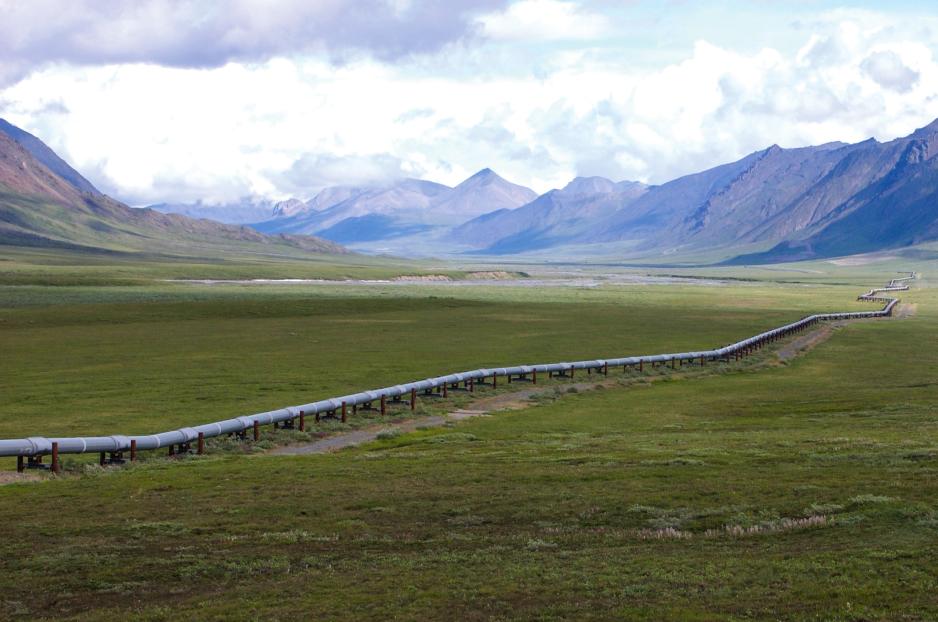Alaska Looking to Re-Enter Global LNG Market with Massive $44bn Project

Trans-Alaska oil Pipeline passing through Alaska’s northern Brooks Range. (Source: US Geological Survey)
The proposed Alaska LNG project has taken its next hurdle with the signing of a development agreement. The $44bn project would see Alaska export up to 20m tonnes of LNG per year starting in 2031.
New York-based energy firm Glenfarne and the Alaska Gasline Development Corporation have agreed on a deal to develop the Alaska LNG project. More than a decade in the making the agreement is a key step to move the project towards realization.
Just last year the project seemed to have hit the end of the road when its board recommended shuttering the operation.
Alaska LNG looks to develop gas resources on the state’s north slope, transport them via an 800-mile (1,300 km) pipeline to a yet-to-be-built liquefaction plant in Nikiski on the Kenai Peninsula, and export the super-chilled gas via tankers to markets in Asia.
The Biden Administration greenlit the project in 2023.
Alternative proposals had also envisioned a liquefaction plant in Alaska’s north to transport the LNG on ice-breaking LNG tankers similar to Russia’s approach at Yamal LNG and Arctic LNG 2.
Alaska LNG would begin piping natural gas and liquefying it in 2031
By piping the gas to the ice-free waters of southern Alaska the project can rely on conventional LNG carriers, rather than the more expensive and complex ice-capable variety.
Glenfarne is simultaneously developing projects in Texas and Louisiana, though neither the Texas LNG and Magnolia LNG projects have achieved investment stage and are years from being built.
At the earliest Alaska LNG would begin piping natural gas and liquefying it in 2031. With a capacity of 20mn tonnes per year the liquefaction facility in Nikiski would rival Russia’s Arctic projects.
Largest LNG plant in the world
A successful implementation of the project would see Alaska re-enter the global LNG market. Its Kenai LNG plant operated for 48 years beginning in 1969 making it one of the oldest such facilities in the world. At the time of its completion it was the largest LNG plant in the world.
It ceased operation in 2017.
Also read
Outside the Alaska Kenai plant the U.S. only began exporting LNG in 2016 and has since become the world’s largest exporter. Alaska LNG would export primarily to the Asian market, unlike the majority of exports from the U.S.’ Atlantic-based projects.
“Glenfarne confirms it has entered into an exclusive agreement with the Alaska Gasline Development Corp. for the development of the Alaska LNG project, including the Alaska export facility, pipeline, and a carbon capture facility,” Glenfarne Energy Transition confirmed in a statement.
Over the past three decades the state of Alaska has faced declining hydrocarbon production and decreasing volumes of oil transported via the existing Trans-Alaska pipeline.
Compared to the peak in the late 1980s at just over 2m barrels of oil per day production has faltered by more than 75 percent.
If brought to fruition Alaska LNG would boost the state’s position as a key energy producer bolstering state government revenues for decades to come.




